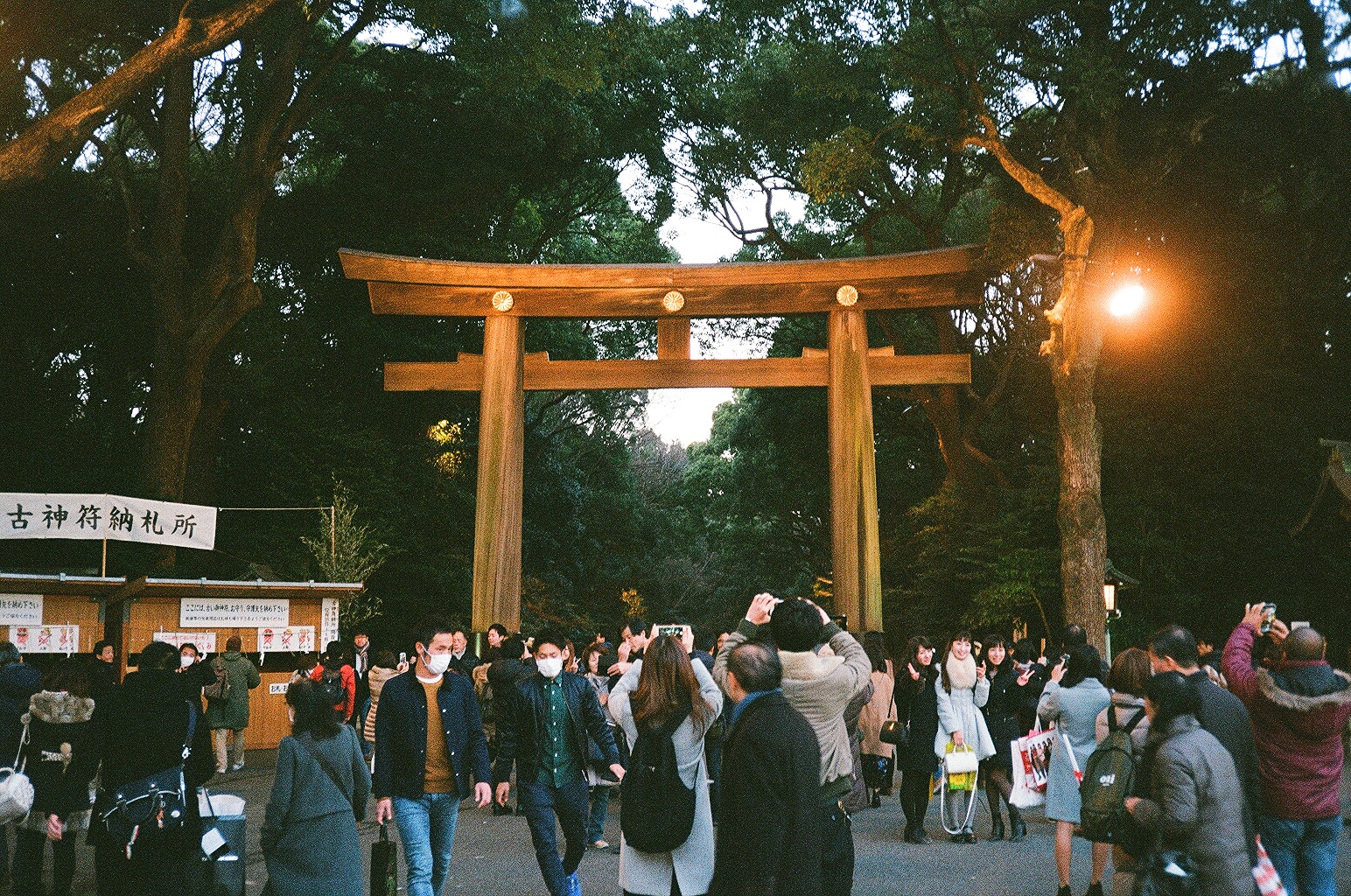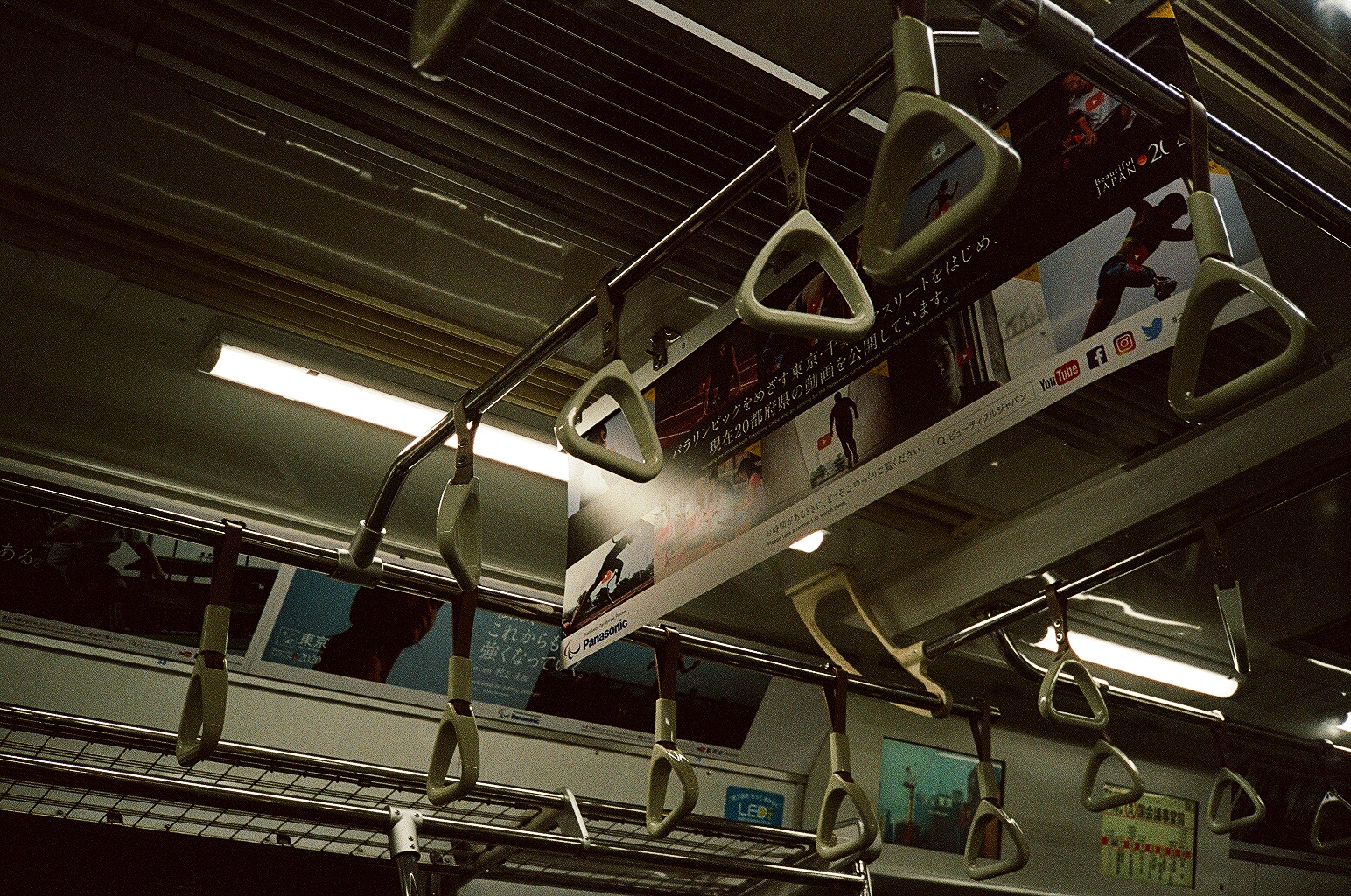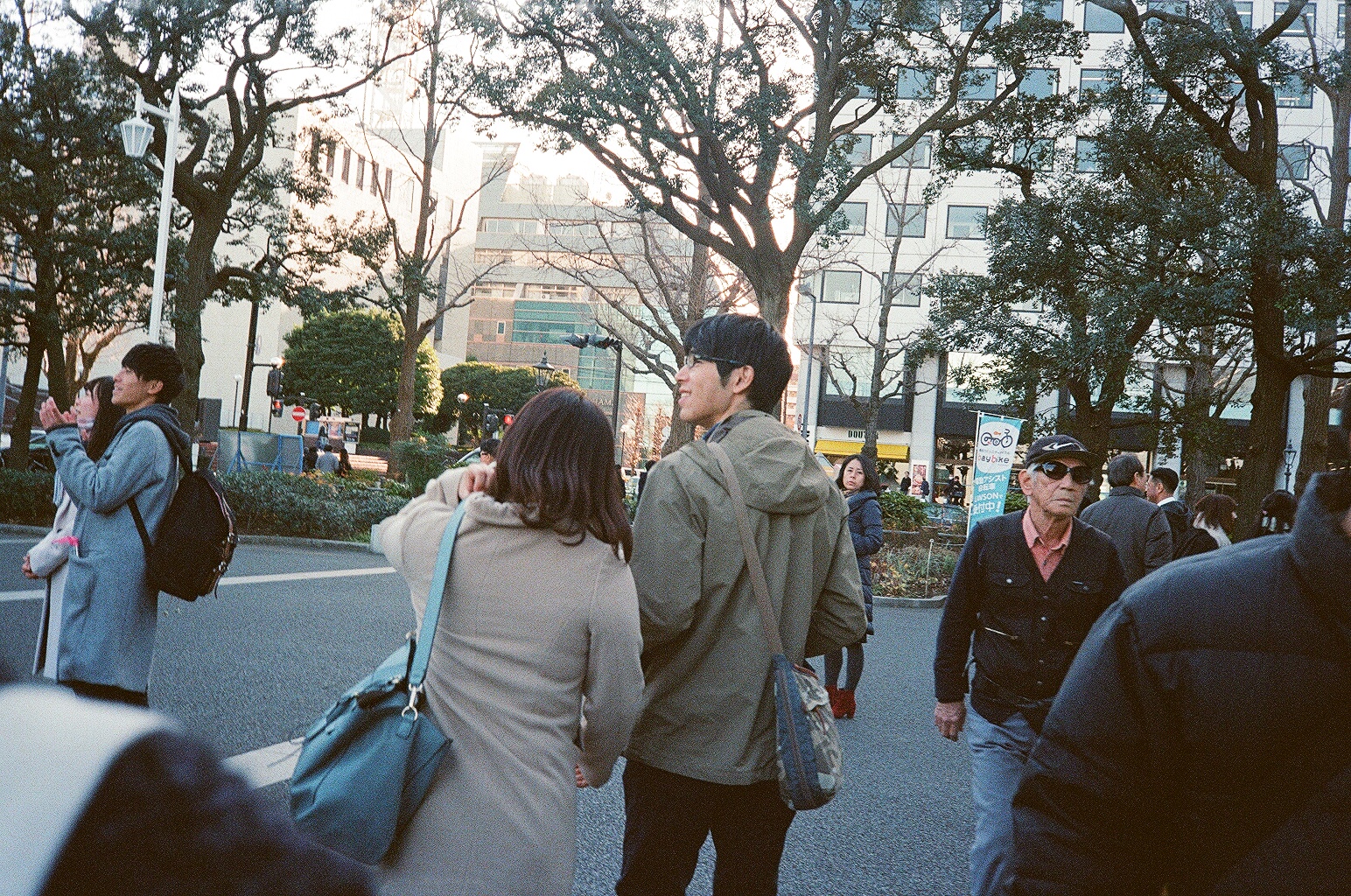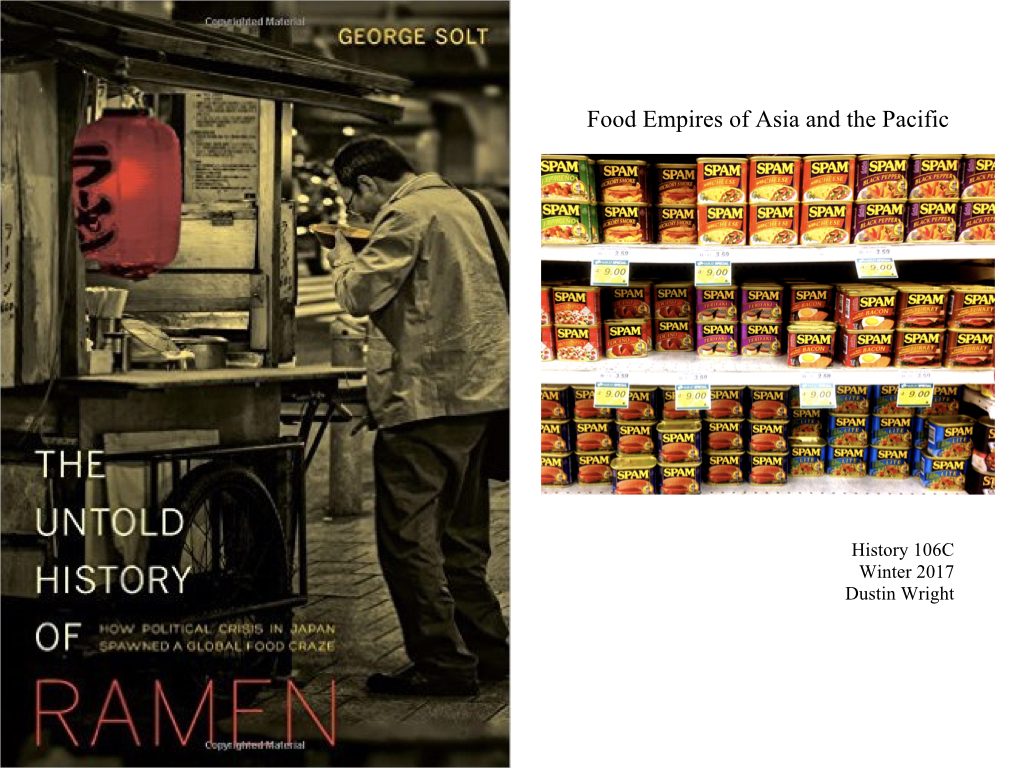My humble website has been painfully neglected for more moons than I care to count. As with so many other early career academics, I initially built the site as a way to build my online presence (my “brand” *gag*, as they say) as I fumbled around the academic job market. For any graduate students or job applicants who are considering creating their own websites, I think it was helpful. I was able to share things I was doing that might not have translated as clearly or personably in typical job application material.
I’m now happily working at California State University, Monterey Bay. As I settle into my new university, a young public institution that sprouts out of the militarized ruins of the shuttered Fort Ord, I’m excited to expand my teaching into Japanese studies more broadly. I’m also thinking about how my website should evolve. There are quite a few scholars who have modeled how to make their interesting websites relevant and fun for people beyond potential employers. I hope to follow their leads.
To that end, I wanted to share a quick post about an exciting project that I’ve been collaborating with since 2017. My involvement began with a workshop at UC Santa Barbara that year, and has continuing through the implementation of the first phase of Bodies and Structures: Deep Mapping East Asian History, an ongoing digital collaboration between historians working within multiple spacial and temporal frameworks. My contribution is centered on the Gail Project photos from The Okinawa Memories Initiative. Below, please see the H-Net announcement for the project. You’ll see links to the individual modules, along with ways in which people can propose their own. I really recommend that people read project co-directors Kate McDonald’s (UC Santa Barbara) and David Ambaras’ (North Carolina State University) overview essay of the project, which is a lucid synopsis of the field of critical geography and an important avenue into understanding spatial methodologies. Cheers to Kate and David for inviting me to participate!
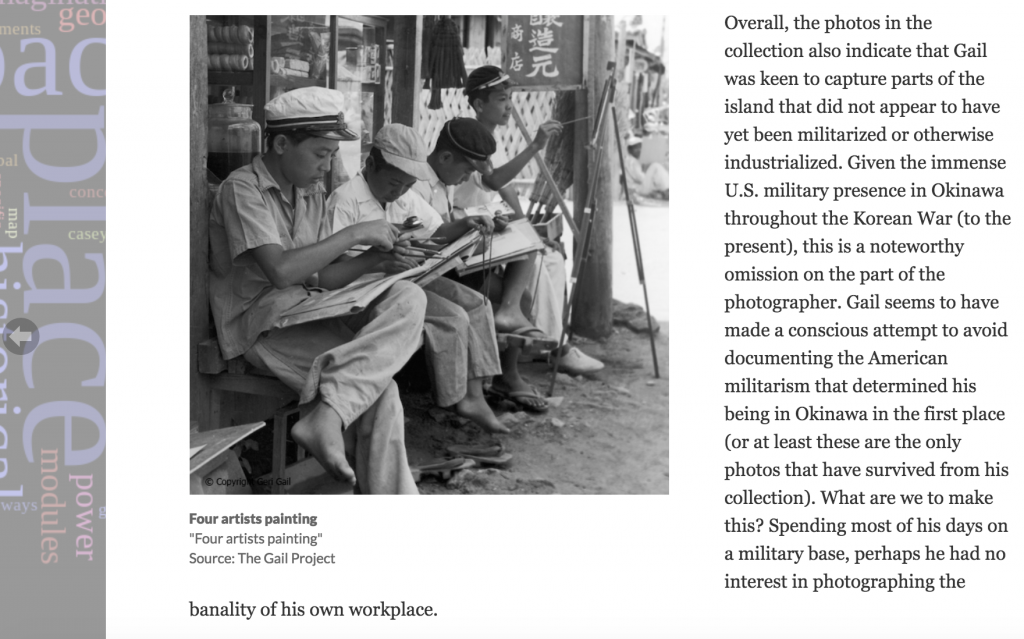
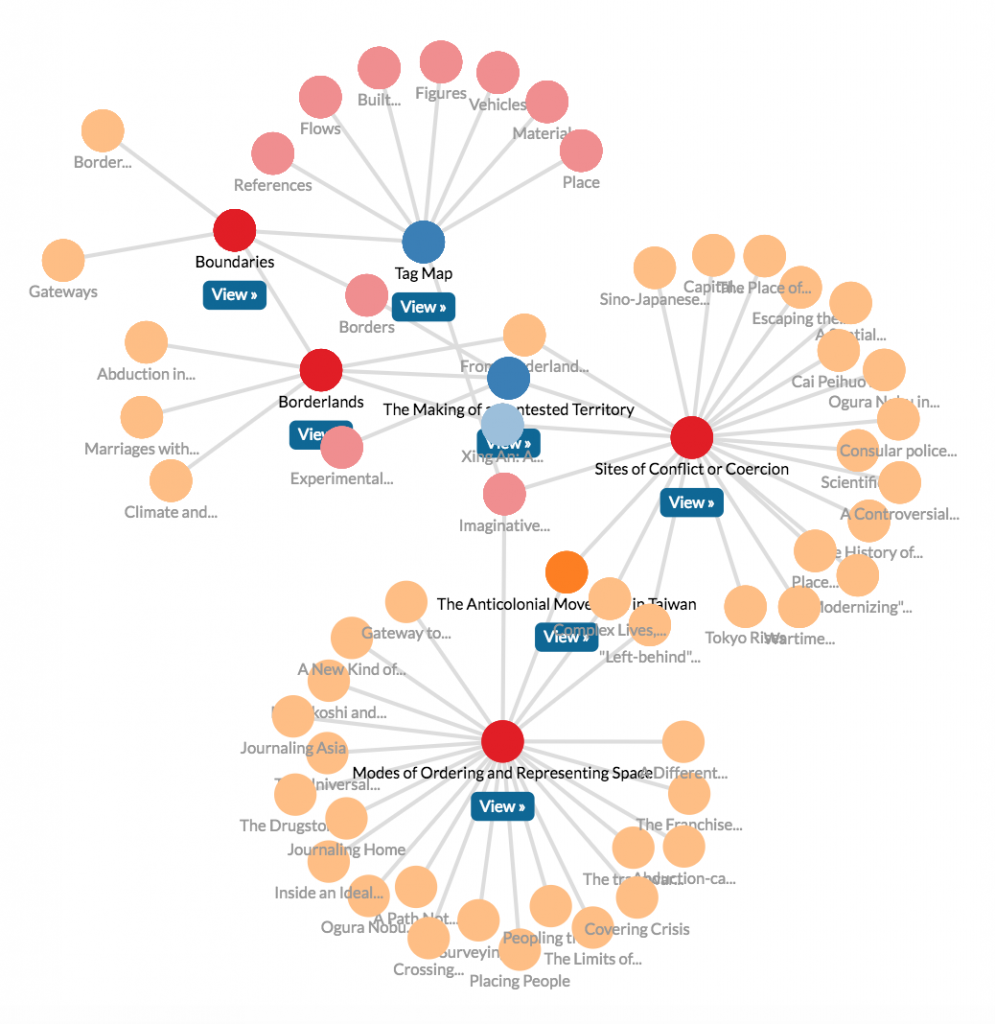
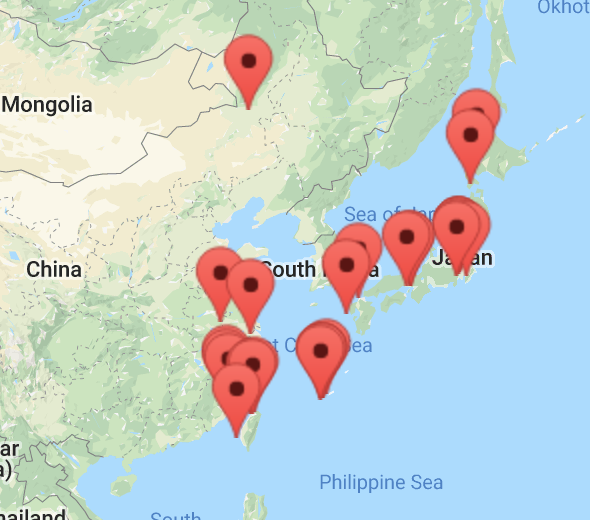
Official Announcement
We are pleased to announce the release of Bodies and Structures: Deep-mapping Modern East Asian History 1.0(http://scalar.chass.ncsu.edu/bodies-and-structures). Bodies and Structures is a platform for researching and teaching spatial histories of East Asia and the larger worlds of which they were a part. Built using the open-source platform Scalar, the site combines individually-authored, media-rich content modules with conceptual maps and visualizations, which reveal thematic, historical, and geographic connections between the modules. Each module is based around a translated primary source or sources. These translations are also included in the site.
Bodies and Structures 1.0 focuses on early to mid-twentieth century Japan and East Asia shaped by Japanese imperialism. The modules tell spatial stories about:
- colonial political activists;
- interethnic intimacies and regional migration;
- department stores and empire;
- the transformative potential of the modern drugstore;
- Chinese settlement on the Mongolian frontier;
- the firebombing of Tokyo; and,
- the photographic eye of an American army dentist in occupied Okinawa.
We invite you and your students to use these modules and their interconnections to analyze how boundary-making and mobility inform each other; how spatially-constituted ideas of progress or difference have taken shape in different locales; and how events and actors construct and reconstruct places and their meanings within shifting imperial contexts. Above all, we invite you to explore, get lost, and find your own pathways through the materials.
Modules and Contributors
“What We’re Doing (Overview Essay)” (David R. Ambaras and Kate McDonald)
“Border Controls, Migrant Networks, and People out of Place between Japan and China” (David R. Ambaras)
“Mitsukoshi: Consuming Places” (Noriko Aso)
“Place Annihilation” (David Fedman)
“Cai Peihuo’s Inner Territory” (Kate McDonald)
“The Okinawa Memories Initiative” (Dustin Wright)
“Xing An: A Contested Borderland” (Shellen X. Wu)
“The Drugstore as Contact Zone” (Timothy Yang)
Useful Guides
Guide to Using Bodies and Structures for Student Research Projects
Going Forward
We are now working on Bodies and Structures 2.0. This version will expand the geo-historical scope to introduce materials from late-Qing and Republican-era China, Vietnam, and Korea, as well as additional materials on Japan and its maritime frontiers, and incorporate new tools for analyzing the site’s materials. Look for more information in Summer 2019.
Follow Bodies and Structures on social media
Twitter: @bodiesandstruct
Facebook: https://fb.me/bodiesandstructures
We Want to Hear from You
Please share your feedback with us at bodiesandstructures@gmail.com.
Or get in touch with us to propose a module!

